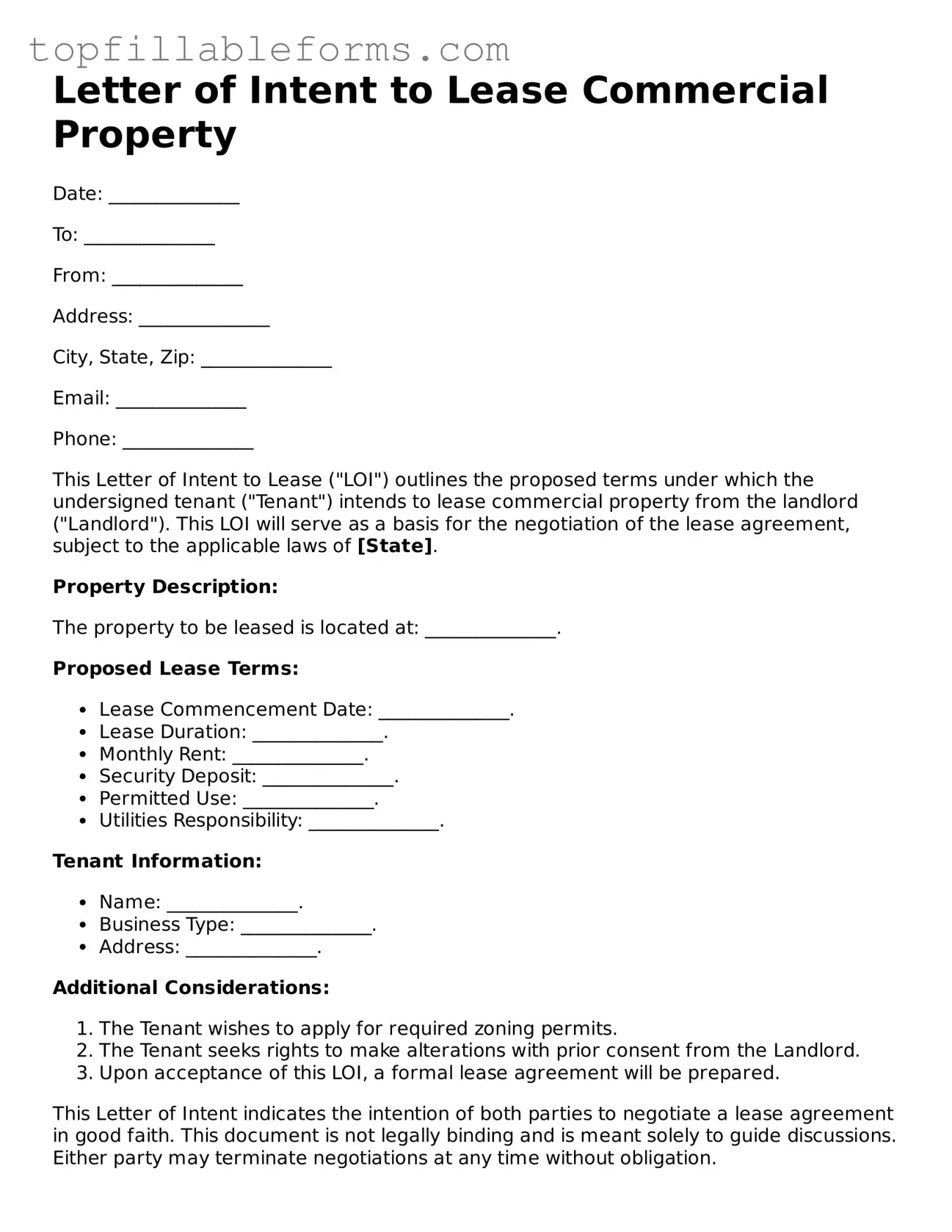Letter of Intent to Lease Commercial Property
Date: ______________
To: ______________
From: ______________
Address: ______________
City, State, Zip: ______________
Email: ______________
Phone: ______________
This Letter of Intent to Lease ("LOI") outlines the proposed terms under which the undersigned tenant ("Tenant") intends to lease commercial property from the landlord ("Landlord"). This LOI will serve as a basis for the negotiation of the lease agreement, subject to the applicable laws of [State].
Property Description:
The property to be leased is located at: ______________.
Proposed Lease Terms:
- Lease Commencement Date: ______________.
- Lease Duration: ______________.
- Monthly Rent: ______________.
- Security Deposit: ______________.
- Permitted Use: ______________.
- Utilities Responsibility: ______________.
Tenant Information:
- Name: ______________.
- Business Type: ______________.
- Address: ______________.
Additional Considerations:
- The Tenant wishes to apply for required zoning permits.
- The Tenant seeks rights to make alterations with prior consent from the Landlord.
- Upon acceptance of this LOI, a formal lease agreement will be prepared.
This Letter of Intent indicates the intention of both parties to negotiate a lease agreement in good faith. This document is not legally binding and is meant solely to guide discussions. Either party may terminate negotiations at any time without obligation.
Should you agree to the terms outlined in this letter, please indicate your acceptance by signing below by ______________.
___________________________
Landlord Signature
___________________________
Tenant Signature
Thank you for considering this proposal. I look forward to your positive response.
